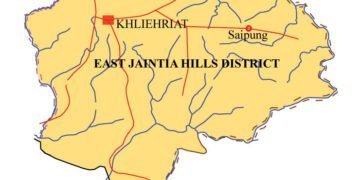The Mawrah Multipurpose Reservoir Project in East Khasi Hills is a “model for integrated water resource management and community-driven environmental conservation efforts,” according to the central government’s Economic Survey 2024-25.
The reservoir project was inaugurated in January 2024. The multi-purpose project is meant to promote tourism, aquaculture and farming.
The reservoir’s dam has been designed in an arc shape for the purpose of structural stability and aesthetic beauty. The total water spread of the reservoir is approximated at 19 to 20 acres with the deepest point of 10.50 metres. Its maximum storage capacity is 528 million litres, which is capable of catering to the water needs of several villages.
The survey said that the reservoir aims to conserve rainwater, recharge groundwater, rejuvenate springs, restore the catchment area and rehabilitate mine-spoilt land.
The Mawrah project was mentioned in a section on ‘adaptation action for water management’.
Several states have undertaken other initiatives to manage water resources. The ‘Jal Sanchay Jan Bhagidari’ initiative, launched in Gujarat in September 2024, focuses on constructing 24,800 rainwater harvesting structures across the state to enhance rainwater harvesting and ensure long-term water sustainability. The Smart Laboratory on Clean Rivers (SLCR), established under the India-Denmark Green Strategic Partnership in Varanasi, aims to rejuvenate the Varuna River through sustainable practices and collaboration among government bodies, institutions, and communities.
The Dhamtari district of Chhattisgarh launched the Jal Jagar campaign focused on rainwater harvesting, rooftop water collection and wastewater management by engaging the community, especially women. It aims to transfer technology to field functionaries and empower communities to make decisions based on scientific data and financial prudence. Jal Jagar activities were undertaken across 370 gram panchayats of Chhattisgarh, involving the participation of 80,389 women and 61,580 men.
























